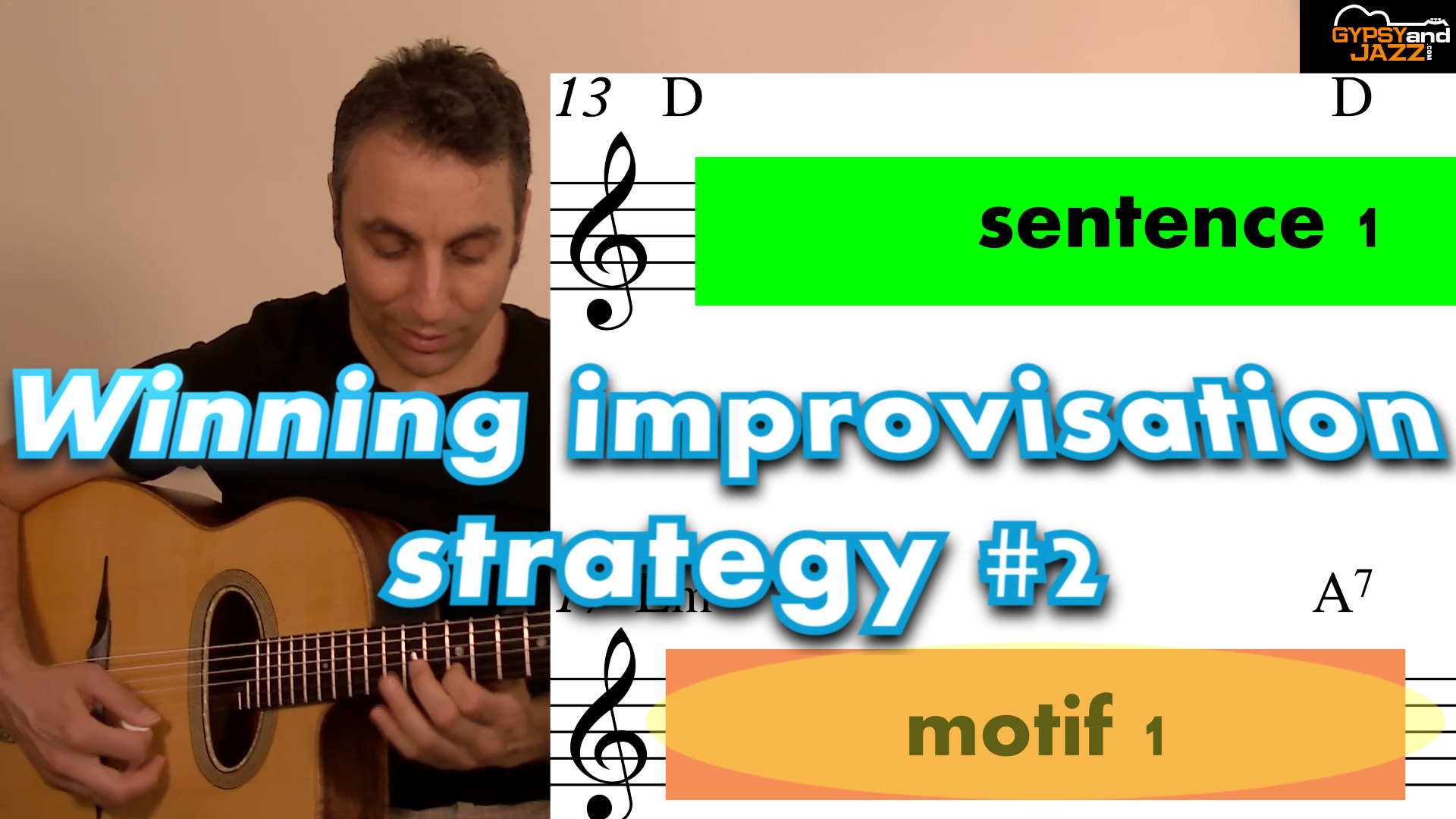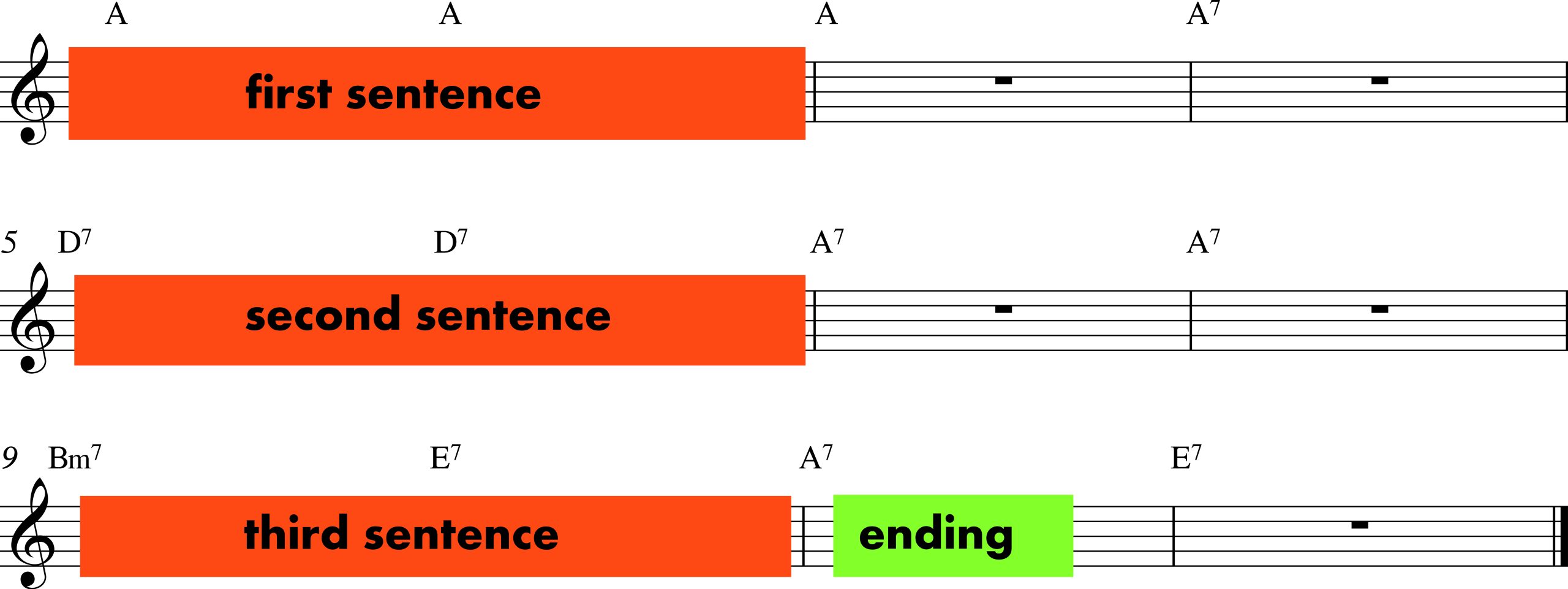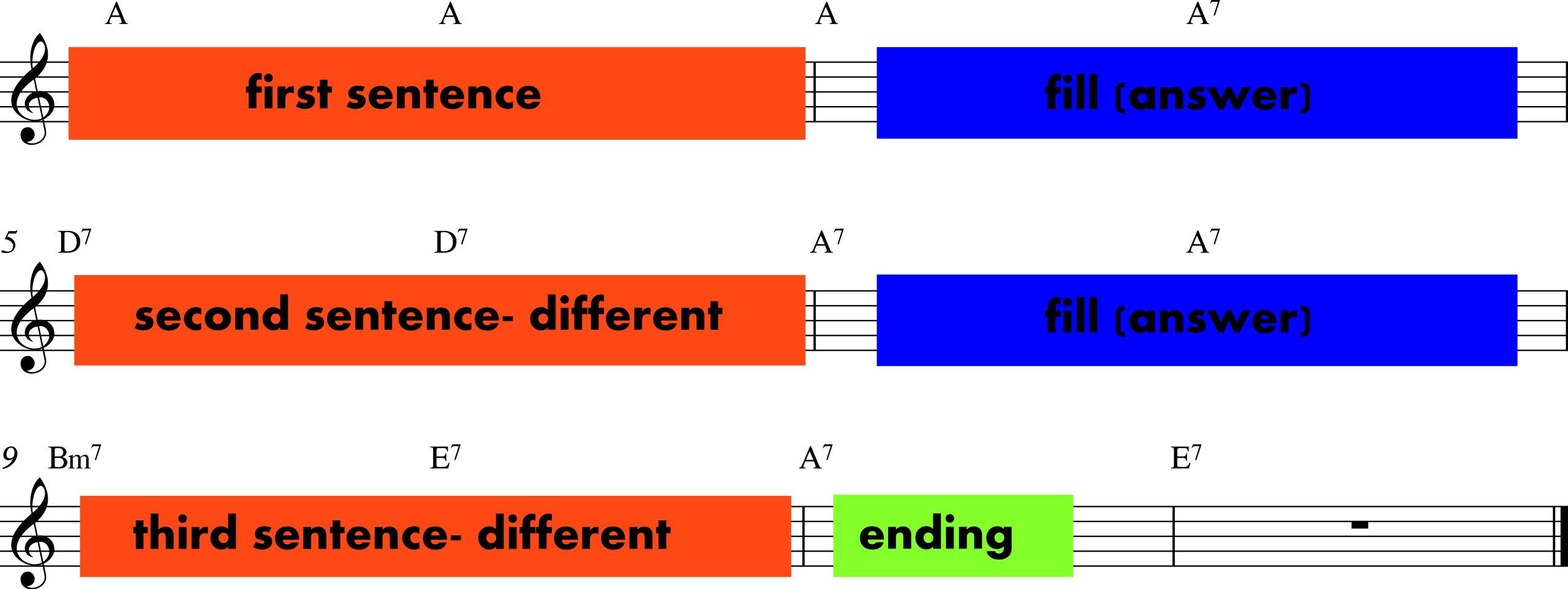
Composing on the spot is one of the definitions of jazz improvisation. Composition usually has some kind of structure. The structure might be a repeated motif or organisation in parts, (like A-A-B-A form), but good compositions always have some kind of structure. And as we said, jazz improvisation is like composing on the spot, which means that you must think of some kind of a structure for your improvisation. It doesn’t mean that you can’t play your licks and arpeggios, but that you have to organise them in a structure.
In the previous video lesson, I showed you how to build a structure according to the flow of the harmony. In this lesson I will show you how to build a structure according to the original melody of the song.
We’ll take a simple example – a blues by Django Reinhardt, Blues for Ike.
First Example – Blues for Ike
The blues is divided naturally into 3 four-bar sentences. The melody is played on the first two bars of each sentence and then it stops for bars three and four. The third and last sentence is the same as the first two, but it has also an ending.
Here is a simplified chord sheet showing the place of the melody.
Basic Structure of Blues for Ike

When you learn the melody, notice how, in the second sentence, the melody adapts itself to the chord and the C# that is part of A7 changes to C to fit in with D7.
Now, try to improvise within that form yourself:
- First, repeat the same sentence three times, adjusting it to the chords when needed. Remember, your melody should last only two bars. Bars 3 and 4 are silent.
- Next, improvise with different sentences, but still keep the silence in bars 3 and 4.
- Then, play fills and answers in the silent places.
Blues for Ike Structure with Fills

See how keeping to a structure makes your improvisation interesting.
Then, experiment with getting away from the structure for a while and then going back to it. Play with this idea and implement it over other songs as well.
Second Example – Coquette
In Coquette, the structure of the melody is a little bit different. You have the first sentence, that ends with a motif, which repeats at the beginning of the second sentence, and then there’s an ending.
Coquette – The Structure of the Melody

Improvise over the song using this structure.
Start by playing very simple sentences. When you feel comfortable with it, you can add your licks, scales and arpeggios. You can improvise freely over the B-part and go back again to the structure in the last A-part, to make your improvisation more varied.
Try to experiment with this idea with other songs as well.
Enjoy! And don’t forget to leave your comments below.



Wayne Vandenberg
Hi Yaakov. Very clear explanations. This sounds so much better than a rambling series of notes.
Do you have any tips on using just sentences versus using sentences and motifs?
Yaakov Hoter
Dear Wayne
Thanks for your comment
As when you speak, it’s always better to arrange your improvisation with sentences.
Even better to use motifs
But even of not – make sure to have a clear beginning and ending for each sentence,
and aim to start the in different places inside the bar –
Before the bar starts
When the bar starts
After the bar starts
That will make your improvisation more interesting
Hope that helps
Best regards
Yaakov